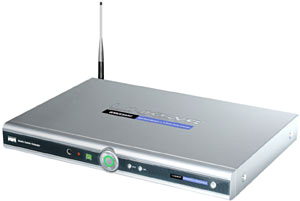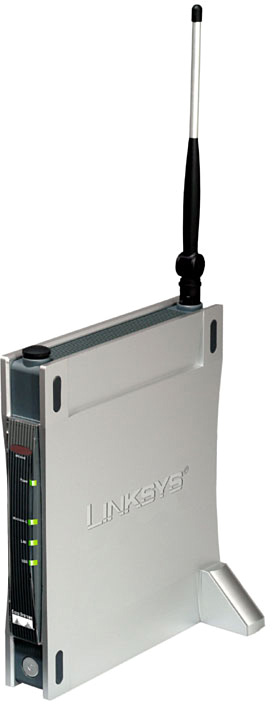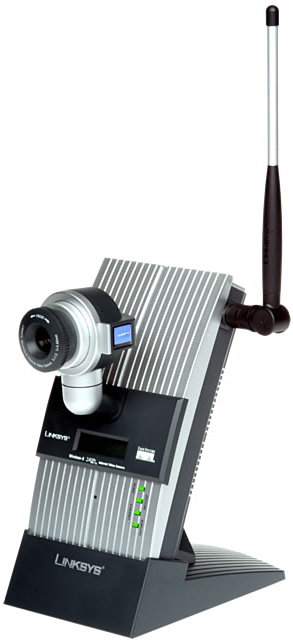In this chapter, you will learn about the benefits of hosting a hotspot, such as generating additional revenue and attracting more people to your business or organization, and the associated costs of doing so. This will help you decide which type of hotspot is best for your particular situation.
The overall benefit or goal of hosting a Wi-Fi hotspot at your location is being able to offer high-speed wireless Internet access there. In addition to satisfying the needs of connectivity for your customers and visitors, you and your staff can take advantage of having the Internet readily available.
Other benefits of hosting a Wi-Fi hotspot include these:
Attract people to your location
Generate additional revenue
Create a private network for your own use
Hosting a Wi-Fi hotspot, in any type of business, should attract new people to your location and entice them to return and stay longer. For retail stores such as cafés and bookstores, this access helps fill empty seats. For businesses such as hotels, having Wi-Fi Internet access available for guests might be essential to prevent losing potential customers.
As discussed earlier, people find hotspots in many ways, including these:
Online directories
Software directories
Display signs
Wi-Fi finders
Laptop/PDAs
Obviously, for people to find your hotspot in directories, you must submit your information. If you set up your hotspot to be part of a network such as Boingo or T-Mobile, your information would likely be listed automatically in their directories. You can also submit your hotspot to universal directories that list any hotspot, free or fee-based, whether it is independent or part of a larger network.
The best way to attract users to your hotspot is to display signs advertising that you have a hotspot at your location. These signs could simply say “Wi-Fi Hotspot Here” or “Wireless Internet Access Available.”
After stepping you through installing and setting up your wireless network, Chapter 8, “Getting the Word Out,” further discusses how to advertise your hotspot.
While you are providing a convenient service to your customers and visitors by hosting a Wi-Fi hotspot, you might also generate some additional revenue for your business or organization. Here are ways that you can create some revenue:
As mentioned numerous times earlier, hosting a Wi-Fi hotspot will likely attract many new visitors to your location. Getting more people in a store and enticing them to stay longer usually means you will sell more of your products or services. Thus, you should see increased revenue while hosting a wireless hotspot.
Estimating this potential indirect revenue is difficult for any business or organization. To start, ask yourself a few questions based on your particular situation:
Are your current customers or visitors the type who would sit at your location with a laptop and check e-mail or browse the Internet?—. If your answer is yes or even maybe, the hotspot will likely attract people. If the answer is absolutely no, you probably should not be taking all this time to set up a hotspot that no one would likely use.
How many people do you think this hotspot would attract?—. You should estimate the number of people, per month, that you think would visit your location just because of your Wi-Fi hotspot. Start by thinking about how many customers or orders you currently receive, and then estimate additional numbers.
Will hotspot users buy products and services?—. You could rely on most of the hotspot users to purchase products or services. If your hotspot will be fee-based, you do not need to worry about this as much, because you will be paid through hotspot usage. When it comes to giving away free access, you probably want only paying customers or members of your organization to use your hotspot. For instance, in businesses such as cafés and restaurants, it is usually socially incorrect for noncustomers to use their restrooms. Therefore, people who use your free Wi-Fi hotspot will likely purchase your products or services.
How much will your revenue increase by hosting a hotspot?—. By using information about your business or organization, estimate how much revenue you can gain from having a hotspot at your location. See the following case study for some ideas that will aid you in the process.
Keep in mind that when hosting a fee-based hotspot, you obviously have the potential to earn more direct revenue from the hotspot than if you were giving away free access. If you team up with a hotspot network such as Boingo, you will receive commissions. However, also consider that when hosting a fee-based hotspot, you typically will receive fewer users than if you were to host a free hotspot.
When you collaborate with a hotspot network, such as Boingo, it takes care of all the payments from users; you just sit back and wait for people to connect to your hotspot. Boingo keeps track of everything.
As of this writing, here is the commission structure that Boingo offers its hotspot partners:
Connect commissions:
$1.00 per connect day for monthly subscribers
$4.00 per connect day for “as you go” users
Sign-up commissions:
$20.00 per sign-up for a monthly subscription
Boingo charges hotspot users $21.95 per month for unlimited access, with no contract required. These subscribers have access to more than 25,000 hotspots worldwide, in addition to one you might deploy. Boingo also offers people a 24-hour access period for a single hotspot, at $9.95. These people are called “as you go” users.
In addition to the connect fees, you would earn $20.00 every time a new customer signed up for the monthly subscription. The only requirement is that the subscription must last more than 60 days.
Now you should determine the amount of money you think you would receive each month from Boingo. See the following case study for some ideas.
If you will host a fee-based hotspot independently, without the help of a hotspot network like Boingo, you need to define your own pricing and terms. To help figure this out, refer to what others are doing. However, remember that because your hotspot is independent, people who join it will not receive the same benefits as if they were to join a network like Boingo. Big hotspot networks like Boingo have many more locations where users can connect under a single subscription. The user’s ability to roam and the number of hotspots within the network should be one of the main factors you consider when determining your hotspot pricing and terms. The following case study gives you an idea of how to determine pricing for an independent fee-based hotspot.
You can still make some direct revenue from hosting a free-access hotspot by selling advertising. The advertisements could be placed on the splash screen web page, which users would see at least the first time they connect, per session. Selling advertising is not recommended for everyone, because it can be time-consuming to make deals with local businesses and to set up the advertisements on your hotspot.
If you think you will be accepting advertisements, you need to think about pricing and terms for potential advertisers. Then come up with a ballpark figure of the potential revenue your business could generate from these advertisements.
After setting up a Wi-Fi hotspot, you can easily create a private wired or wireless network for use by you and your employees. The private and public networks can share the same Internet connection. Of course, this will not concern you if you already have a private network set up at the hotspot location. In this case, you can share the existing Internet connection between the private and public networks. If set up correctly, the private and public networks will be independent of each other, and your private network will be secured from the public.
Setting up your own private wireless network for your business or organization has the following benefits:
Mobility
Secure Internet browsing
Shared files and printers
Use of wireless devices, such as the following:
Media adapters
Presentation adapters
Wi-Fi video cams
Print servers
Just like Wi-Fi hotspots, having a wireless network for your business enables you to have mobility when using laptops and other Wi-Fi devices. You can access the Internet and print documents from anywhere within your facility. In addition, with Wi-Fi, you can move your desktop PCs anywhere within the coverage area, without the hassle of running ugly telephone or Ethernet cabling throughout the office.
You could use your own Wi-Fi hotspot to browse the Internet and perform online tasks. However, unlike private networks, Wi-Fi hotspots must be left unencrypted and unsecured so that the public can effortlessly connect to the hotspot. Anyone who has the right software and tools can see what you and others are doing on the web. People can also see passwords for services like FTP and POP3 e-mail. If sharing services are set up on your computer, people might also be able to browse your files and get into your computer.
Caution
Make sure you thoroughly understand the consequences of using an unsecured wireless network, such as a hotspot, before conducting important tasks.
On the other hand, people cannot easily see information being passed to and from secured websites such as online online banking and shopping carts, which normally use Secure Sockets Layer (SSL) encryption. As shown in Figure 2-1, Internet Explorer and other web browsers let you know if the website is using SSL encryption by displaying a padlock. Another hint is that websites protected with this technology usually start with https: instead of the regular http:
Tip
Along with a variety of other tools and methods, you can use virtual private network (VPN) connections to help secure the data that is passing to and from your computer. This is a great way to temporarily protect your data while surfing the web on a hotspot.
When your computers are on their own private network, you can securely use file and service sharing. Windows XP has built-in features that enable you to easily drag and drop files to and from the computers on your network. Windows XP also supports printer sharing. Without other devices, you can hook a printer to just one computer, and all the PCs on the network can use it, too.
Many Wi-Fi accessories are available that do some pretty neat things, and they are useful in many businesses and organizations. Again, you could supposedly use these accessories on your public hotspot, but the data would not be protected.
Wireless media adapters, such as the one shown in Figure 2-2, also called Wireless Media Players or Entertainment Center Extenders, can stream digital audio and video files from computers on the network to your TV and stereo. In a corporate setting, this is a great way to display your company logos, photos, and slide shows to customers and visitors. In cafés, you can use the remote control of the media adapter to browse and choose your media files, all from a TV. Some even support Internet radio, giving you a chance to listen in on a variety of music from around the world.
Wireless presentation players, such as the one pictured in Figure 2-3, are extremely valuable for interactive presentations and conferences. One of the simpler advantages of this device is that it enables you to wirelessly connect to a projector or monitor from your computer to display to everyone your computer screen or your presentation. Some presentation players might even allow other wireless users to connect to the device and take over the presentation or display their screen on the monitor. This allows a group of people to quickly and clearly share their ideas and notes. With internal memory or removable storage, such as a USB flash drive, you could load the PowerPoint or other presentation files onto the player and make a presentation without a computer.
Wireless video cameras, such as the one shown in Figure 2-4, are useful for video-conferencing and surveillance. You and other authorized users can “see what it sees and hear what it hears” from anywhere in the world via the Internet. Most cameras have a motion detection feature, which sends you an e-mail when the camera view experiences activity. Some Wi-Fi cameras even have a remote-control feature whereby you can change the camera view using its web-based utility. The quality of these Wi-Fi cameras differs greatly among manufacturers. Among other accessories, vendors might offer outdoor and ceiling enclosures for their cameras.
Hosting a hotspot does not come cheap, yet the benefits usually outweigh the costs. Typical operating costs you should anticipate while installing and hosting your Wi-Fi hotspot are as follows:
Internet service—. $60 or more per month
Equipment—. $40–$500 one time
Installation—. 1–2 days of your time
Ongoing support—. A few hours each month
If you do not already have an Internet connection available for the hotspot, that will be one of your first expenses. Business-class Internet service prices and terms depend on the type of service and features among the various ISPs.
If you are deploying a small hotspot, as in a small café or bookstore that will not have loads of users, you will likely get away with paying $35–$80 per month for an Internet connection. However, if you are setting up a hotspot in a large hotel or library, you will probably have a great deal of users, which would require a higher-quality Internet connection that might cost $100 to $300 a month. Chapter 3, “First Steps to Setting Up a Wi-Fi Hotspot,” further discusses the Internet connection types.
The cost of the equipment, or hardware, varies significantly depending on the size and type of hotspot you plan to install.
The simplest hotspot using the same type of wireless router that is used in homes will cost only around $40. This type of hotspot is simple because it has no hotspot features such as user redirection, usage limits, required login, and so on. However, this book presents a scenario in which you can use free software to get these hotspot features at no cost, making an affordable hotspot solution if you have an extra PC available. However, you still have to purchase some equipment to use in conjunction with the free software. Factor in about $50 for this equipment when you are installing a small hotspot.
Installing a Wi-Fi hotspot to provide coverage for a large area, such as an entire library or hotel, might cost up to $1500 or more, depending on the number of access points that are needed to cover the area.
Although your time might not be a direct cost, your time is probably valuable. If it helps, you can assign a cost to the time you will spend installing and supporting your hotspot. Of course, you can always use evenings and weekends to install the system to avoid impacting your business.
The time involved in installing a hotspot also depends on the solution’s size and complexity. This could take just an hour for a simple setup of a single wireless router covering a small area or several days to cover an entire building.
Keep in mind that you have to take time to support your hotspot. You never know when problems will pop up, whether someone will mistakenly unplug the wireless router or not know how to connect to the network. You might find yourself spending a few hours each month supporting your hotspot. In addition, you might need to spend some time upfront learning about how Wi-Fi works to effectively support your customers.
Now you should have a better feeling of the benefits and costs that are associated with hosting a Wi-Fi hotspot and which type you want to implement.
Remember the main benefits of hosting a hotspot:
Providing wireless Internet access for your visitors
Attracting people to your location
Generating additional revenue
Creating a private network for your own use
In addition, do not forget the costs:
Internet service—$60 or more per month
Equipment—$40–$500 one time
Installation—1–2 days of your time
Ongoing support—A few hours each month



